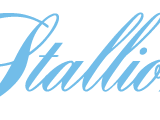Novara Park has quickly made headlines in New Zealand with its globetrotting Gr.1 stallion Jakkalberry, who was the leading first season sire by combined average at the Premier-Select 2017 NZB yearling sale. His stock averaged $163,500 off only a $6000 service fee and Jakkalberry was also the leading sire overall by average at the Select NZB Yearling sale. Novara Park’s proprietor, Luigi Muollo, is a successful property investor in Wellington, and brings plenty of business acumen to the New Zealand racing and breeding industry.
Q: You own successful businesses in property investment. What is the key to this success?
A: “The key is to surround yourself with good people. You can’t beat experience. It is for this reason that we have the very experienced and wellrespected Ray Knight in charge of our hard working team at Novara Park. His knowledge and years of experience in the industry will provide Novara Park the opportunity to build a great platform in all areas from stallion services to developing racehorses of the future. “Ray has built a strong team around him and everyone plays a part. In any industry, it is not only about what the market wants today but being a step ahead and knowing what they will want in the future. We are very excited about Jakkalberry from this perspective, as his pedigree and race record is perfectly placed for the Australian three year-old races. The New Zealand bred three year-olds once again dominated the Australian Classic races and we look forward to being part of this tradition of producing Classic winners. “Jakkalberry (Storming Home-Claba di San Jore by Barathea) was rated the Champion Older Male Stayer in GB in 2012, and raced in seven countries over a six season career. A Gr.1 winner in Italy, Jakkalberry’s Australian performance when third to Green Moon and Fiorente in the Melbourne Cup-Gr.1 provides a good way of stacking up his ability in a local framework. Another impressive performance was his third placing in Dubai’s Sheema Classic-Gr.1 behind the two champions Cirrus des Aigles and St Nicholas Abbey. Jakkalberry was a consistent racehorse, winning in each of the six seasons he raced, and collecting plenty of black type in his career. His oldest foals will be two year-olds in 2017-18, and judging by the way yearling buyers sought his stock, there is plenty to look forward in the future at Novara Park.”
Q: How would you best describe yourself?
A: “I am very much a family man and enjoy quality time with my wife and four young boys. You could say I’m an optimist who is highly analytical, and I am always keen to learn. The best way to learn is by your mistakes, but even better is learning from other people’s mistakes. And lucky, it’s a cliché, but the harder you work the luckier you get!
Q: Everyone in the breeding game has a favourite theory or two. Can you run us through your philosophy and how you approach your mating plans?
A: “Pedigree is one part of the equation, but I value an athletic type and Gr.1 race ability with a turn of foot just as importantly. It is a common characteristic of almost all great sires that the layout of their pedigree gives them every chance to combine well with a wide variety of mares. “I do like to research as much as I can to see what works and what doesn’t. The Machiavellian sire line is working very well in New Zealand and Australia and that was a key consideration when choosing Jakkalberry, who is a grandson of Machiavellian. “Likewise the Zabeel sire line has really worked so well and there I looked for a Zabeel sire line with speed. This search resulted in Sweynesse, a son of champion sire Lonhro who was a grandson of Zabeel. When Sweynesse went to stud he was the highest rated stallion from the Zabeel sire line to begin stud duties in New Zealand since Savabeel “I value a stallion’s female line just as importantly as his sire line. Before the arrival of the Coolmore duo of Montjeu and Galileo, Barathea was, together with In The Wings, the most successful son of Sadler’s Wells at stud in Europe. Barathea is the sire of Jakkalberry’s dam Claba di San Jore. Sweynesse is out of Swansea who is by Singspiel, a very successful son of In The Wings. “Turn of foot is such an important factor. Jakkalberry holds the record for the fastest last 600m in a Melbourne Cup. To run 33.53 seconds at the end of a 3200m race under third top weight has X-factor all over it. In most of his races, Sweynesse ran the fastest final sections. These were against the best three year-olds of his year.”
Q: Can you tell us a little about your childhood and any early racing influences you had?
A: “My father successfully bred and raced horses all his life. As a young boy I remember going to the races to watch his horses race or going to the farm where his mares and foals were on agistment. I really loved going to Australia for the Gr.1 races with him. My father bred and raced dual Gr.1 winner Kingston Bay who won the Chipping Norton and the Canterbury Guineas. He also raced Lord Revenir, who won The Metropolitan-Gr.1. “My brother, Tony who lives in Sydney, bred and raced Caulfield Guineas-Gr.1 winner Press Statement. He has also bred and raced the Gr.1 winners Hawkspur and Pressday and he was fortunate enough to be a part shareholder in champion Dundeel. My brother and I are close and talk nearly every day about our horse breeding business plans and our racehorses. There is no bigger thrill for us than owning a winning racehorse. It doesn’t matter if it is a maiden or a Gr.1 event. It’s pure excitement.”
Q: What is it about the racing industry that you enjoy the most?
A: “The people and the horses. The people are genuinely fantastic people from all walks of life. The horses are the most amazing elegant animals. I look forward to every foal who is born at Novara Park and to watching each one as they head out on their journey to the race track and beyond.”
Q: Is racing a business, a hobby, or both, for you?
A: “It started out as a hobby and has evolved into a business that I am very passionate about.”
Q: How has your business success impacted on your approach to the racing industry?
A: “It is about understanding the industry and where the opportunities are. The key decision is around the stallions we stand. They have to tick all the boxes and they have to provide value for money to the broodmare owner. Novara Park sire Jakkalberry was the leading first season sire by combined average Premier-Select 2017 NZB yearling sale off only a $6000 + GST service fee. Now that is value for money. “Our other stallion Sweynesse (Lonhro-Swansea by Singspiel) is a Group winner in Australia, who came a close second in the 2015 Australian Guineas-Gr.1. The winner, Hallowed Crown, stood his first season at stud for $A27,500, while third placed Shooting to Win stood for $A38,500. In the Hobartville Stakes-Gr.2, the result was similar with Hallowed Crown first, Sweynesse second, Kermadec third, and fourth was Shooting to Win. Kermadec stood his first season at $A22,000. These sums illustrate that Sweynesse offers the breeders serious value for money at $NZ6000 + GST. “Sweynesse is a dual Group winner by champion sire Lonhro, from an imported American family that descends from Secretariat’s stakes winning daughter Fantastic Ways (herself dam of three individual stakes winners, and many more among her descendants). His first crop of foals is due in 2017.”
Q: Do you have an eye on any potential stallions at the moment?
A: “We are always looking, but we are also aware of the fact that we currently don’t need a new stallion, given we have two fresh young stallions. Jakkalberry was the big result out of Karaka 2017 and we are really excited on the reports from the breakers. He just has the amazing ability to stamp his foals and leave an athletic horse. Sweynesse’s first foals will be born this spring and if they look anything like him they will sell very well at the sales. This year we have been steadily increasing the quality and numbers in our broodmare band so are well prepared moving forward.”
Q: What advice would you give a young person wanting to work or invest in racing?
A: “First, working and investing are very different and both require a different approach. In regards to working in the racing and breeding industry, I suggest that a young person should aim to begin their career working at a place that has an experienced team and a good reputation. Learn how the experts run their farms, or train their horses. “For someone wanting to invest in racing, understand the risks and where you want to be in the marketplace before you get started. Racing a horse can have huge upside and the $10,000 yearling can sometimes beat the $1m yearling on the racetrack to earn huge amounts, but it doesn’t always go that way. “Likewise, breeding has its risks and getting a commercial return at yearling sales is not always possible. However with the increase in prize money in Australia I feel there has never been a better time to invest. Australia has the best racing in the world and we have the advantage of it being on our doorstep.”



